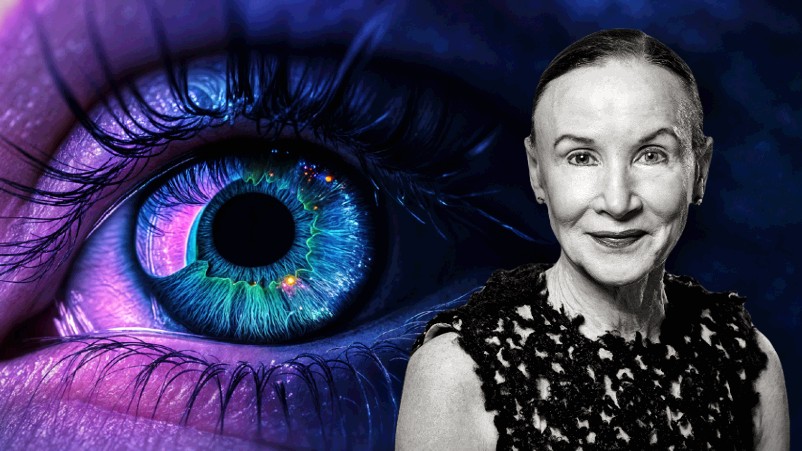Sentiment shift: Five years on, broadcasters release VOZ total TV audience data for transition to new 2024 trading currency; media buyers ‘feeling very positive’, heat on software firms to avoid reporting conflicts and chaos

“We still don’t have the data in our third party software – that arrives today [Wednesday],” says Magna Global's National Managing director, Lucy Formosa Morgan on the release of VOZ data. “I will say it’s not gold standard certified yet.”
Broad market frustration and sometimes disbelief at the continued delays from broadcasters promising an audience measurement system that shows how Australians are consuming TV content via rooftop aerials, connected TVs and mobile devices is turning. Terms like ‘world first’, ‘gold standard’ and a ‘significant development’ are back instead of market angst. But there’s still nine months to go in the (potentially) great transition.
It’s going to be a world first, which is massive. It will provide the clarity we’ve wanted for years in regards to the incremental reach BVOD is delivering on top of terrestrial TV.
Go get
It's happened. Sort of. Total TV audience viewing data across any device, screen or delivery path from a single source is now hitting the market although media agencies with access to the VOZ datasets are not yet supposed to show their advertiser clients anything to avoid chaos in reporting.
Media industry software systems which power planning, trading and post-campaign analysis of the $4bn TV ad market from the likes of Mediaocean, TVmap, techedge and Nielsen-owned Landsberry & James now have to release new upgrades to ingest and process VOZ data.
Carat’s Chief Investment Officer Craig Cooper is banking on July for Mediaocean’s readiness although others expect the pack of TV software systems – many now owned by private equity companies – to deploy at different stages; some could be sooner, others later than July.
“We are feeling very positive about this launch,” Cooper said. “But we won’t really get under the hood until July when it goes into Mediaocean’s system. That’s the date we’re waiting on. It’s going to be a world first, which is massive. It will provide the clarity we’ve wanted for years in regards to the incremental reach BVOD is delivering on top of terrestrial TV.”
OzTAM CEO Doug Peiffer downplayed July as the hard stop – “some software companies will be earlier to market,” he told Mi3.
Not ‘gold standard’ – yet
National Managing Director at Mediabrands’ Magna Global, Lucy Formosa Morgan, said: “We still don’t have the data in our third party software – that arrives today [Wednesday],” she said of TVmap’s rollout. “I will say it’s not gold standard certified yet,” reflecting a view across the market that there is still months of testing ahead to ensure different software tools are delivering consistency in their analysis, reporting and data visualisation.
“We are only five days into the process,” said Omnicom Media Group Chief Investment Officer, Kristiaan Kroon. “It took the TV networks over a year to get to a good place in terms of the use of data and understanding it. Like any other big data rollout, it’s going to be staged. That’s why we’ve got a phased [industry] approach. We expect that process to go all the way through Q3 [September quarter].”
Broadcasters are already preparing for TV rate and volume deal negotiations for 2024 using total TV analysis from VOZ.
Younger set flocking to BVOD
Cooper said quantifying the audience spill from free-to-air to BVOD was a key part of the new measurement rollout “but until we see the data we won’t know by how much … it could be up to 10 per cent.”
Topline VOZ data publicly released in the last week by OzTAM showed total TV reaches 20 million Australians each week with BVOD accounting for 8.5 per cent of total TV minutes viewed weekly [across all people]. The real work comes in drilling down by audience demographics, day-parts and show genres. In the troubled younger viewing segments – 18-24 year-olds – which are the lightest terrestrial linear TV viewers and those leaving fastest are also the fastest growing demographic for broadcaster video on demand (BVOD), according VOZ data.
Reach beats viewing declines
Broadcasters are likely to stick with their audience reach argument for total TV in an attempt to neutralise overall declines in the frequency and amount of time viewers are spending with various broadcaster channels.
“You can see why we’re building it,” said Peiffer. “TV still reaches the population, it’s how they’re consuming it that is changing. VOZ is going to give clarity on who’s watching, how they are watching and on which devices.”
Peiffer pointed to VOZ audience reach figures which showed total TV captured 77 per cent of Australians in a given week and that 50 per cent of TV’s 20 million viewers only watched terrestrial TV. Depending on demographics, BVOD-only viewers accounted for 9-13 per cent of 20.4 million viewing minutes each week.
Overall, agency investment bosses are upbeat. “We are getting there,” said Formosa Morgan. “I can’t wait to just start playing with the data and seeing how we can evolve buying and planning as a whole. We will be testing over the next couple of months in terms of a currency. We are at least six months away. It will be early next year.”
Kroon’s take was similar. “You would mark this as a significant development in VOZ becoming a fully-fledged product in market,” he said. “Data is finally available on our side of the fence with scale and is now being built out across all demand-side tech stacks. That’s going to take a little time.”
Cooper agreed. “The road map for 'VOZTAM' is February next year. It’s a good way of doing it. It’s the best solution to give us time to be ready for that. It’s still unclear what’s happening to OzTAM and RegTAM as entities. I don’t think they’ve worked that out.”

